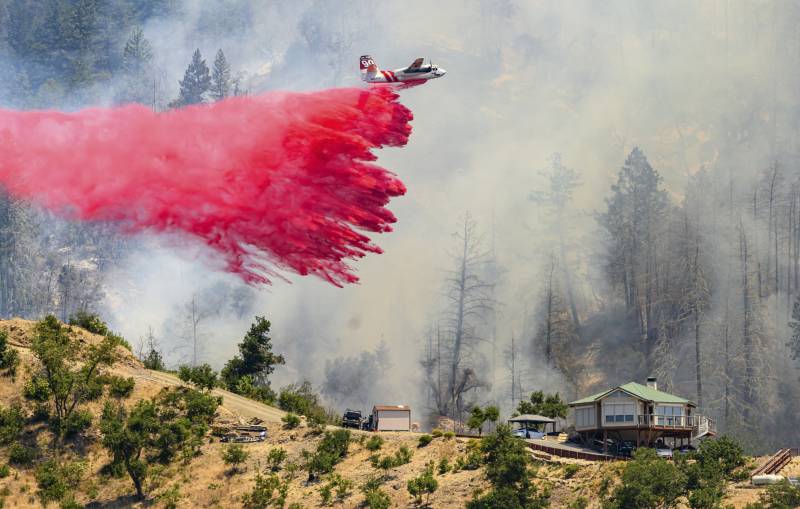The fire is being driven by wind and is pushing down the valley, according to Cal Fire.
More than 300 firefighters, including air units, are making strong progress on the blaze, focused on preventing it from extending into nearby Jericho Canyon southwest of Old Lawley Road, Hernandez said.
“It’s all going to be up to the type of winds that we’re going to be getting,” he said. “Right now, it’s the heat and also the topography that’s making it challenging, but it’s going to be wind dependent. With the amount of resources that we have assigned to this fire, we are going to be able to contain it much faster before it continues expanding.”
The cause of the heavy brush fire is under investigation, according to Hernandez.
Pacific Gas & Electric Co. had started shutting down some power lines on Wednesday morning in an attempt to lessen the risk of sparking a fire, including some outages farther north of Calistoga along Highway 29, according to PG&E’s map.
Meanwhile, a red flag warning was in effect in Napa County and much of the North Bay due to the fire danger posed by the heat, low humidity and gusty winds.
The low humidity and high overnight temperatures expected throughout the current heat wave across much of California could make fighting fires harder, UCLA climate scientist Daniel Swain said Monday during his “Weather West” office hours on YouTube.
“Wildfires will likely remain quite active at night during this event because it will remain unusually warm – perhaps record warm – with overnight humidity that does not increase very much relative to how much they normally would,” he said.
The heat wave is forecast to be long and intense, with triple-digit temperatures across inland areas and little reprieve overnight. An excessive heat warning was extended until next Tuesday, July 9, by the National Weather Service, which noted that “an event of this scale, magnitude, and longevity will likely rival anything we’ve seen in the last 18 years.”
This is a breaking story, and it will be updated.

